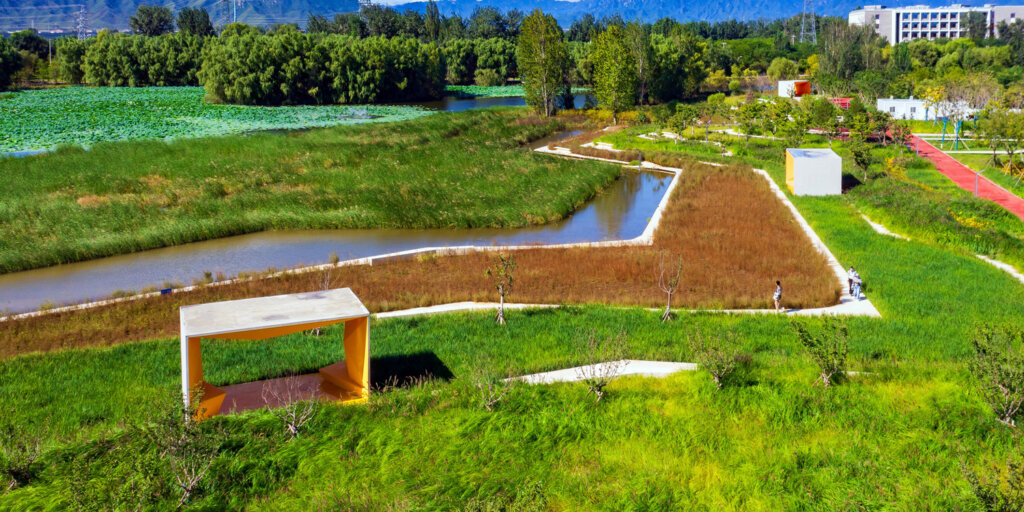Home » Reimagining Urban Flood Management Strategies
Reimagining Urban Flood Management Strategies

Extreme weather events, fueled by climate change, have increasingly battered cities worldwide. A notable example occurred in July 2023 when Toronto experienced a swift and overwhelming storm that caused extensive flooding. Ten centimeters of rain fell within three hours, inundating basements, parks, and roadways, and resulting in damages estimated at over $1 billion. This event underscored how aging infrastructure, ill-equipped for such extreme volumes of rain, failed after a summer fraught with record precipitation.
Not only is Toronto grappling with these challenges, but regions from the American South to Sub-Saharan Africa faced similar catastrophes in 2024. Experts agree that while altering the trajectory of extreme weather may be beyond our reach, changing our approach to rainwater management is vital. Rather than attempting to keep water out, a more effective strategy may involve allowing water to infiltrate urban environments in a controlled manner.
The concept of "sponge cities," developed by Beijing-based landscape architect Kongjian Yu three decades ago, embodies this philosophy. Yu promotes replacing traditional grey infrastructure with green solutions such as trees, gardens, and ponds to absorb and manage rainwater effectively. This transformation not only addresses flooding but also enhances biodiversity and urban aesthetics. Yu has implemented sponge city principles across over 200 cities globally, responding to the inadequacies of conventional stormwater management systems originally designed for temperate climates.
Yu observes that traditional infrastructure is failing in various regions, particularly in tropical climates, as worsening climate conditions are pushing cities towards more monsoonal rain patterns. He advocates that integrating sponge city design into urban landscapes can alleviate flooding. Examples of innovative sponge city projects include areas within Toronto that utilize green infrastructure to absorb stormwater sustainably.
In Bangkok, the transformation of a former tobacco factory into Benjakitti Forest Park showcases sponge city principles with wetlands that can absorb and store excess rainwater, promoting biodiversity and remediating nearby contaminated water. Similarly, in Toronto’s Liberty Village, small parkettes replace traditional paving with rain-absorbing plants and permeable materials, mitigating stress on larger drainage systems. Such interventions not only manage stormwater but also beautify neighborhoods, retaining or elevating property values.
In China’s Sanya City, Yu designed a park featuring a central lake, small islands planted with banyan trees, and elevated walkways to facilitate access during floods. This park manages an astounding volume of stormwater, illustrating the potential of green infrastructure for urban areas.
Another significant endeavor is Leslie Lookout in Toronto’s Port Lands, where all rainwater is absorbed directly into the park's natural features without traditional stormwater infrastructure. The approach to stormwater management here reflects a shift towards sustainable practices that enhance urban resilience.
Yu asserts that if urban landscapes incorporate approximately 20% of green spaces functioning as sponges, cities could effectively mitigate urban flooding, contributing to a robust response to future extreme weather events. The potential for sponge city principles to revolutionize urban planning and resilience underscores the urgent need for cities to adopt innovative approaches in the face of climate change. For further insights on this topic, the MaRS podcast "Solve for X: Innovations to Change the World" provides additional perspectives.
MaRS Discovery District
https://www.marsdd.com/
MaRS is the world's largest urban innovation hub in Toronto that supports startups in the health, cleantech, fintech, and enterprise sectors. When MaRS opened in 2005 this concept of urban innovation was an untested theory. Today, it’s reshaping cities around the world. MaRS has been at the forefront of a wave of change that extends from Melbourne to Amsterdam and runs through San Francisco, London, Medellín, Los Angeles, Paris and New York. These global cities are now striving to create what we have in Toronto: a dense innovation district that co-locates universities, startups, corporates and investors. In this increasingly competitive landscape, scale matters more than ever – the best talent is attracted to the brightest innovation hotspots.


